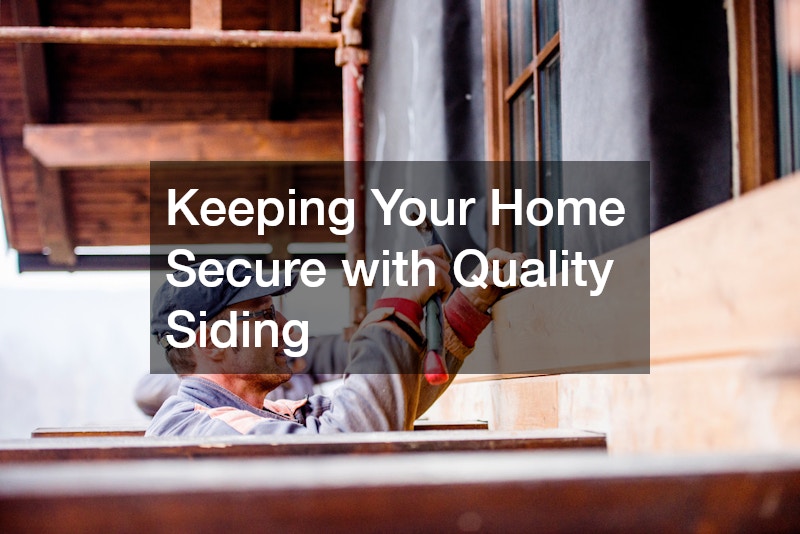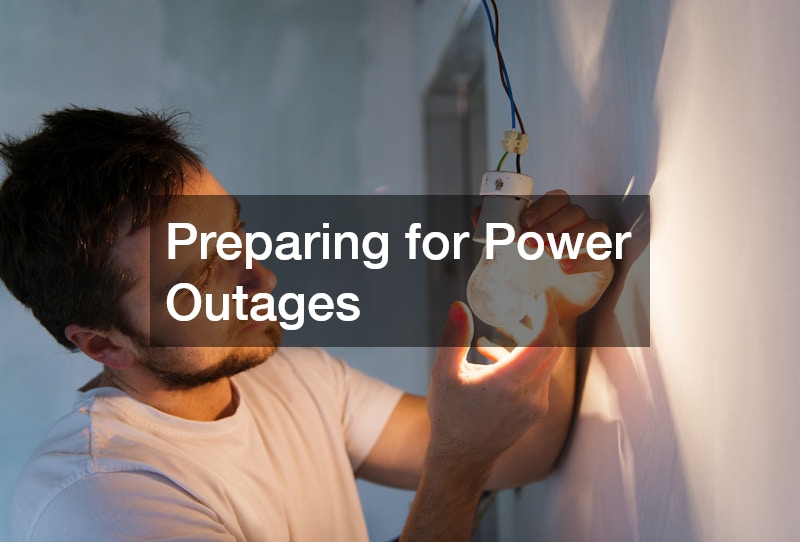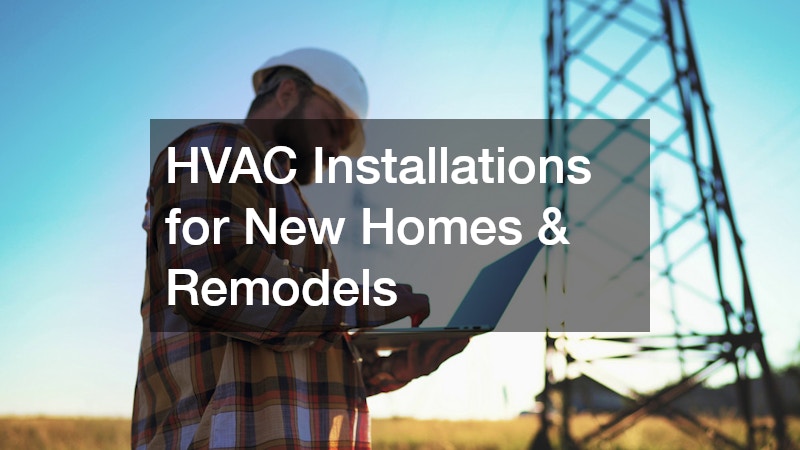Home safety encompasses various measures and practices that ensure the safety and well-being of individuals within a home. Understanding home safety is essential for every homeowner, as it protects not only the structure of the house but also the inhabitants living within. By implementing different strategies and enlisting the help of various professionals, you can create a secure living environment that safeguards against many risks.
From weather-related concerns to fire hazards and structural integrity, countless facets contribute to the overarching theme of home safety. Homeowners must recognize the importance of regular maintenance and upgrades to keep their properties secure and functional. This article will explore essential strategies homeowners can employ, touching on crucial topics including roofing services, plumbing services, and security system services, among others.
Moreover, the guide emphasizes the significance of each area addressed, highlighting how the proper installation and maintenance of systems contribute to a house’s overall safety. Whether it’s ensuring secure plumbing, installing a fire sprinkler system, or removing hazardous materials like asbestos, each component plays a vital role. Ultimately, the goal is to foster a safe living environment that can withstand the test of time, which starts with a clear understanding of what is home safety.
1. Protecting Your Home from the Elements

To fully grasp what is home safety, one must first consider protection from the elements, which can severely impact a home’s condition. Extreme weather conditions, such as heavy rain, snow, or high winds, can lead to severe damage if a home isn’t adequately prepared. Engaging roofing services for regular inspections and maintenance is a proactive approach to safeguarding your roof from deterioration caused by the elements.
Maintaining roof integrity is crucial, as even minor leaks can escalate into significant structural issues and costly repairs. Regular roof inspections can identify vulnerabilities that could lead to water intrusion or mold growth, both of which pose significant risks to home safety. Therefore, investing in quality roofing services not only extends the life of your roof but also enhances your home’s defense against harsh weather conditions.
In addition to roofing, insulation plays a critical role in protecting your home from temperature fluctuations and moisture. Proper insulation helps regulate indoor temperatures, reducing heat loss in winter and keeping it cool during the summer. By understanding what home safety is in terms of insulation and roofing, homeowners can take meaningful steps to fortify their homes against environmental challenges.
2. Enhancing Structural Integrity
Structural integrity is a vital aspect of what is home safety. It encompasses the strength and stability of your home, ensuring it can withstand various forces, be it weather-related impacts or normal wear and tear. Engaging with metal fabricators can aid in reinforcing essential structural components, especially for homes located in areas prone to severe weather.
Strategically placed metal reinforcements can significantly improve the stability of your frame, safeguarding against potential damage. In addition, regular assessments of foundation walls and load-bearing beams can help identify weaknesses early, allowing for timely repairs and modifications to prevent severe complications. A well-maintained structure not only enhances safety but also adds long-term value to your property.
Further, utilizing high-quality materials during home renovations is essential in maintaining structural integrity. Investing in durable supplies ensures that your home can handle daily stresses while providing a safe environment for you and your family. When understanding what home safety is, ensuring a robust structure through the right materials and fabrication methods is non-negotiable.
3. Preventing Fire Hazards with Proper Systems
Fire safety is a critical component of home safety and should never be overlooked. A proper fire sprinkler system design can dramatically reduce the risk of catastrophic fire damage, and these systems are crucial in providing an immediate response to fire outbreaks. Homeowners must invest in the installation of fire extinguishers and smoke detectors, complemented by a professionally designed sprinkler system.
Regular maintenance of fire safety equipment is equally important. Smoke detectors should be tested monthly, and batteries need to be replaced annually to ensure they operate correctly in case of emergencies. Moreover, scheduling inspections of your fire sprinkler system can prevent failures during critical situations, ensuring that your home remains protected from fire hazards.
Additionally, creating emergency evacuation plans can enhance fire safety in your home. All family members should be familiar with escape routes and have a designated meeting point outside the house. Understanding what is home safety involves involves not only precautionary measures but also preparation for potential emergencies, ensuring that everyone knows how to respond effectively to fire hazards.
4. Keeping Your Home Secure with Quality Siding

Quality siding plays a fundamental role in reinforcing what is home safety by providing a first line of defense against both external elements and intruders. Durable siding options, such as fiber cement or vinyl, not only enhance the aesthetic appeal of your home but also offer enhanced security. The proper siding install can shield your walls from moisture, pests, and harsh weather conditions, preserving your home’s structural integrity.
Besides protection from weather and intruders, quality siding contributes to better insulation, enhancing your home’s energy efficiency. It helps maintain consistent indoor temperatures by keeping warm air inside during the winter and repelling heat during the summer months. In this way, excellent siding not only protects your home but also enhances comfort while reducing energy costs.
Moreover, homeowners should opt for siding materials that are resistant to fire and pests, further enhancing safety measures. Regular inspections and timely repairs to any damaged siding can prevent further issues, cementing your home’s safety. Understanding what is home safety entails entails recognizing the importance of having quality siding that combines aesthetics, protection, and energy efficiency.
5. Ensuring Safe Water Systems in Your Home
When exploring what is home safety, the integrity of water systems in your home cannot be ignored. Safe plumbing is central to maintaining health standards and avoiding damages associated with leaks or contaminations. Engaging with professional plumbing services ensures that your pipes are in good condition and that your water supply remains clean and free from hazardous substances.
Routine maintenance checks of plumbing systems can prevent potentially dangerous situations such as leaks, pipe bursts, or sewage backups. Most plumbing issues grow gradually but can lead to extensive damage and unsafe conditions if left unchecked. By prioritizing regular plumbing services, homeowners can ensure the reliability of their water systems and maintain a safe living environment.
Additionally, it’s essential to consider water quality and its impact on health. Installing water filtration systems can greatly enhance the quality of drinking water, removing impurities and toxins. This proactive measure reinforces the understanding of what is home safety by ensuring that all aspects of health, including potable water, are taken into account.
6. Maintaining a Safe and Comfortable Temperature
Temperature regulation is another vital facet of what is home safety, as extreme temperatures can lead to various health concerns. The role of an air conditioning contractor is critical when it comes to installing and maintaining HVAC systems that keep your home comfortable year-round. Properly functioning heating and cooling systems contribute significantly to a safe living environment.
Regular maintenance and timely repairs of HVAC systems can prevent breakdowns, especially during extreme weather conditions. Homeowners should also consider upgrading older systems to energy-efficient units, which can save on energy costs while ensuring better temperature control. Understanding how temperature regulation contributes to home safety helps homeowners appreciate the importance of professional assistance from certified air conditioning contractors.
Moreover, ensuring that your home is properly insulated complements your HVAC efforts. Insulation prevents heat exchange and drafts, allowing heating and cooling systems to work more efficiently. When understanding what home safety is, maintaining an optimal and safe indoor temperature is paramount for your overall well-being and comfort at home.
7. Preparing for Power Outages

Preparing for unexpected power outages is a crucial aspect of home safety, especially in areas prone to severe weather events or unreliable power supply. One effective solution is to invest in a generator install to provide backup power during emergencies, ensuring that essential appliances remain functional. Having a dependable source of electricity alleviates potential hazards related to darkness and loss of heating or cooling capabilities.
Homeowners should also have a readily accessible emergency kit that includes flashlights, batteries, non-perishable food, and water supplies. This ensures that families can weather short outages while waiting for power restoration. By being prepared for unexpected power outages, you significantly enhance your home’s safety protocol.
Moreover, discussing with professionals about integrating a whole-home generator can extend comfort and security in more significant outages. Regular maintenance of generators is essential to ensure they operate efficiently when needed most. Understanding what is home safety means means preparing proactively for the unexpected, securing the comfort and safety of your loved ones at home.
8. Removing Dangerous Materials Safely
Hazardous materials like asbestos pose significant risks to health and safety, making their safe removal a fundamental aspect of what is home safety. The presence of asbestos in older homes can lead to severe respiratory health issues when disturbed. It is crucial to engage qualified asbestos removal services to mitigate these risks efficiently and safely.
Before any renovation work, homeowners should conduct thorough inspections to identify potential hazardous materials. Only trained professionals should handle the removal process, ensuring that dangerous fibers are not airborne, thus protecting the health of all occupants. Properly documenting and disposing of hazardous materials reinforces the commitment to home safety.
Furthermore, understanding the significance of safe disposal methods cannot be overstated. Many municipalities have specific regulations surrounding the disposal of hazardous materials, and failing to comply can lead to legal repercussions. Thus, a critical aspect of what is home safety is not only the removal of dangerous materials but also their responsible handling and disposal.
9. Keeping Wildlife at Bay
Wildlife intrusion can pose significant risks to home safety, especially in suburban and rural settings. Various animals can damage property, spread disease, and create safety hazards when they make their way into homes. Understanding what is home safety includes includes recognizing the importance of wildlife removal services to manage and mitigate these risks.
Employing trained professionals can effectively manage wildlife encounters; they use humane traps and other methods to remove animals without harm. Additionally, taking preventative measures such as securing trash containers, sealing entry points, and educating household members about wildlife risks can significantly reduce the chances of an encounter. Knowledge of local wildlife and their behaviors is critical for homeowners seeking to maintain a safe environment.
Involving wildlife removal services may also provide insights into long-term prevention strategies, assisting homeowners in reinforcing their property against potential wildlife issues. Effective communication with these service providers ensures a structured approach to wildlife management, ultimately contributing to an effective understanding of what is home safety. A proactive stance towards wildlife prevention is essential for the well-being and security of your home.
10. Installing Advanced Security Measures

In today’s world, determining what is home safety undoubtedly includes the necessity of advanced security measures to protect your property and loved ones. Installing security systems provides an effective line of defense against potential intrusions and theft. From intelligent surveillance cameras to motion sensor lighting, the implementation of security system services greatly enhances residential safety protocols.
Home security can also involve the installation of smart locks, allowing homeowners to monitor and control access points remotely. Regular updates and maintenance of these systems ensure they remain effective against evolving threats. Engaging professional security system services helps ensure that installations are carried out with care and precision, minimizing vulnerabilities.
Moreover, educating household members about security practices is pivotal in reinforcing safety measures. Conducting regular security audits and encouraging the installation of neighborhood watch programs can create a culture of vigilance, further enhancing safety. Ultimately, understanding what is home safety in this context is about creating a fortress that protects against both external threats and internal negligence.
In conclusion, understanding what is home safety is paramount for every homeowner dedicated to protecting their property and loved ones. The multiple facets discussed—from structural integrity and proper insulation to effective fire safety systems—highlight how each contributes to a comprehensive safety strategy. By engaging professionals across various domains, such as roofing services, plumbing services, and security system services, homeowners can build and maintain a safe and secure living environment.
Considering the potential hazards posed by the elements, wildlife, and intruders, making informed decisions and taking proactive measures is essential. Regular maintenance, system upgrades, and preventative planning contribute significantly to ensuring safety and comfort within the home. Ultimately, home safety is not just a one-time effort but an ongoing commitment to creating a secure sanctuary for you and your family.
By taking the necessary steps, such as engaging metal fabricators, fire sprinkler system design, and asbestos removal service, homeowners can fortify their homes against a myriad of risks. A safe home environment fosters peace of mind, encouraging families to thrive and enjoy their shared space together. As you navigate the realm of home safety, remember that knowledge and action are your greatest allies in safeguarding your precious abode.



